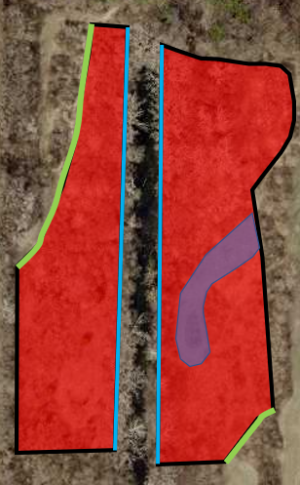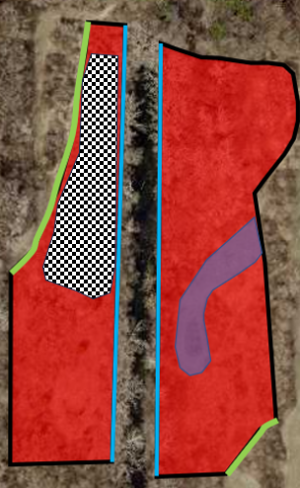tynimiller
5 year old buck +
So going to yield to all of you as when it comes to switchgrass I've never messed with the stuff. I knew when I bought my place few years back bush honeysuckle and oriental bittersweet were a massive issue. Well finally yesterday started the process with our state's district forester and balls are rolling to qualify for EQIP assistance in covering up to 70% of the cost for a professional forester come out and treat the entire property.
HOWEVER, while I despise the amount of BH present on the landscape, it is providing a lot of visual cover presently and I had an idea to be proactive prior to the likely 2024 treatment contract occurring (guess process takes a while).
Two different areas, with the Western one being very thick with BH at like 85% of it, I've thought about having a buddy of mine with a dozer come and completely clear the areas - leaving only any select native hardwoods or any mature cedars which if mowed around may survive burnings in future. Of note I believe if memory serves there are less than twelve oaks and cedars I would deem doing this for. The thought behind this would be to get switchgrass plantings going here and while 2024 will see some cover (bad invasive kind) loss I'd at least have one or two of these spots starting to thicken up into about 6-7 total acres of switchgrass cover.
So for those with switchgrass experience....does this sound like a viable thing to even attempt? Dozer would hit this late winter before any type of thaw would be happening.
I don't have a drill, so it would be all broadcasted for note.
One of my questions also would be so if I have this area dozed, the pile of bush honeysuckle and scrub saplings would end up quite significant....I would assume a burn pile of this stuff would absolutely scorch the ground there making any kind of switchgrass growth nearly impossible for a few years or no?
Fully admitting true ignorance of first hand experiences with switchgrass...have read tons of threads, books, handouts, watched videos, walked a ton of it and even recommended it to others on their places...just never messed with it myself.
HOWEVER, while I despise the amount of BH present on the landscape, it is providing a lot of visual cover presently and I had an idea to be proactive prior to the likely 2024 treatment contract occurring (guess process takes a while).
Two different areas, with the Western one being very thick with BH at like 85% of it, I've thought about having a buddy of mine with a dozer come and completely clear the areas - leaving only any select native hardwoods or any mature cedars which if mowed around may survive burnings in future. Of note I believe if memory serves there are less than twelve oaks and cedars I would deem doing this for. The thought behind this would be to get switchgrass plantings going here and while 2024 will see some cover (bad invasive kind) loss I'd at least have one or two of these spots starting to thicken up into about 6-7 total acres of switchgrass cover.
So for those with switchgrass experience....does this sound like a viable thing to even attempt? Dozer would hit this late winter before any type of thaw would be happening.
I don't have a drill, so it would be all broadcasted for note.
One of my questions also would be so if I have this area dozed, the pile of bush honeysuckle and scrub saplings would end up quite significant....I would assume a burn pile of this stuff would absolutely scorch the ground there making any kind of switchgrass growth nearly impossible for a few years or no?
Fully admitting true ignorance of first hand experiences with switchgrass...have read tons of threads, books, handouts, watched videos, walked a ton of it and even recommended it to others on their places...just never messed with it myself.

